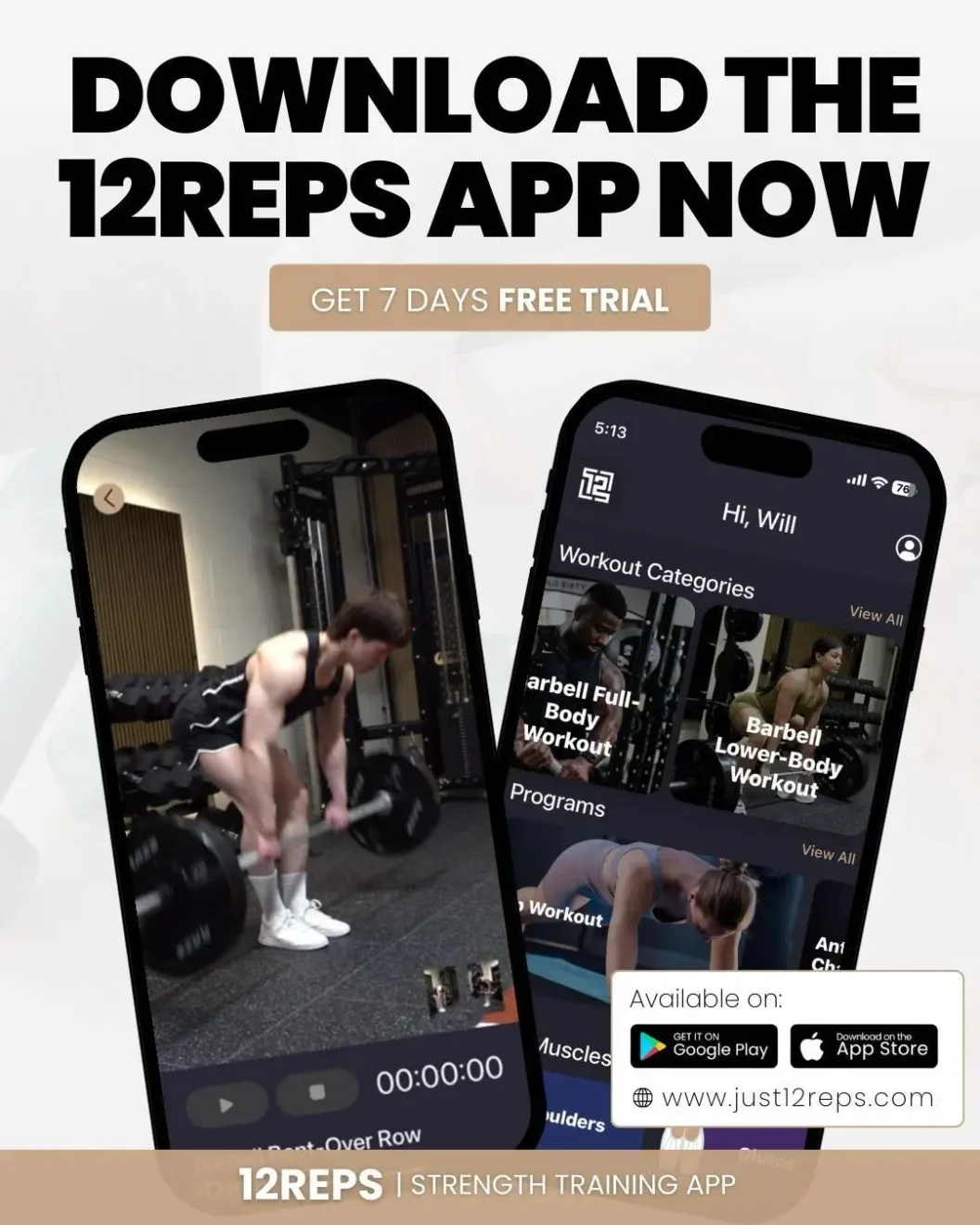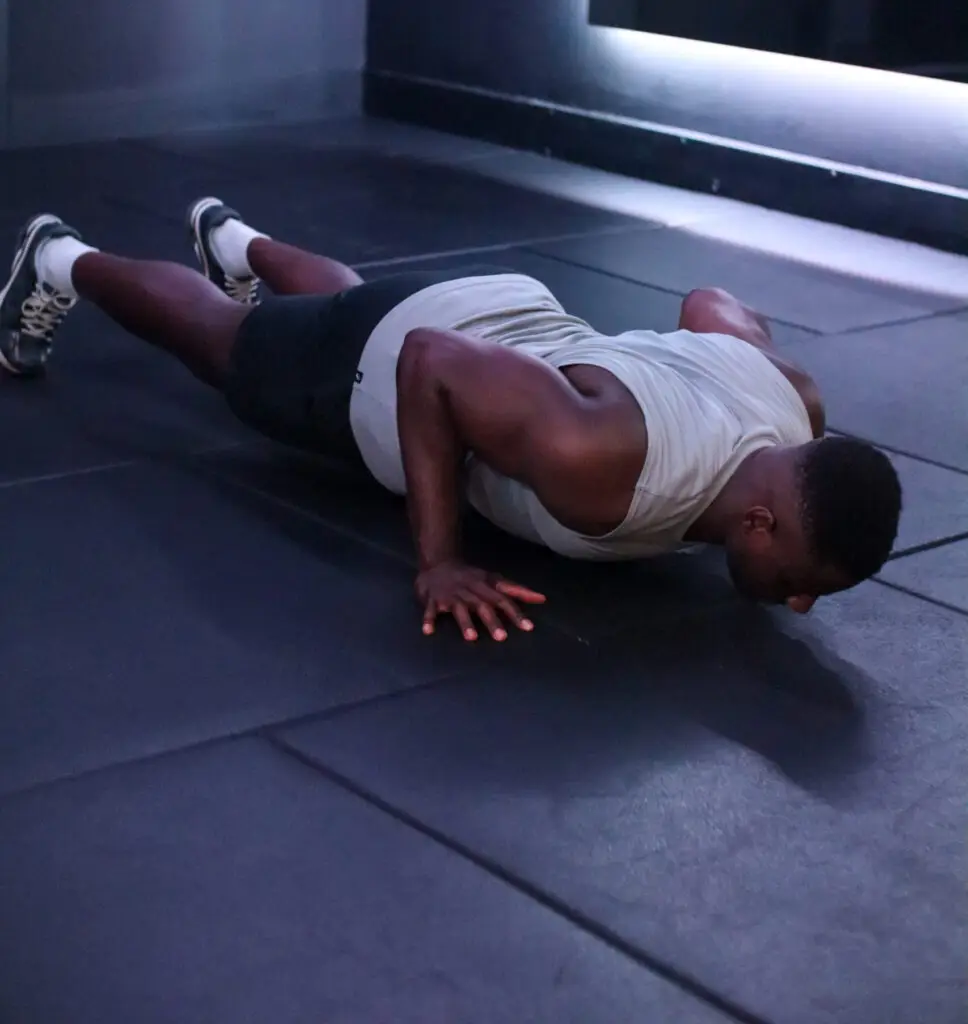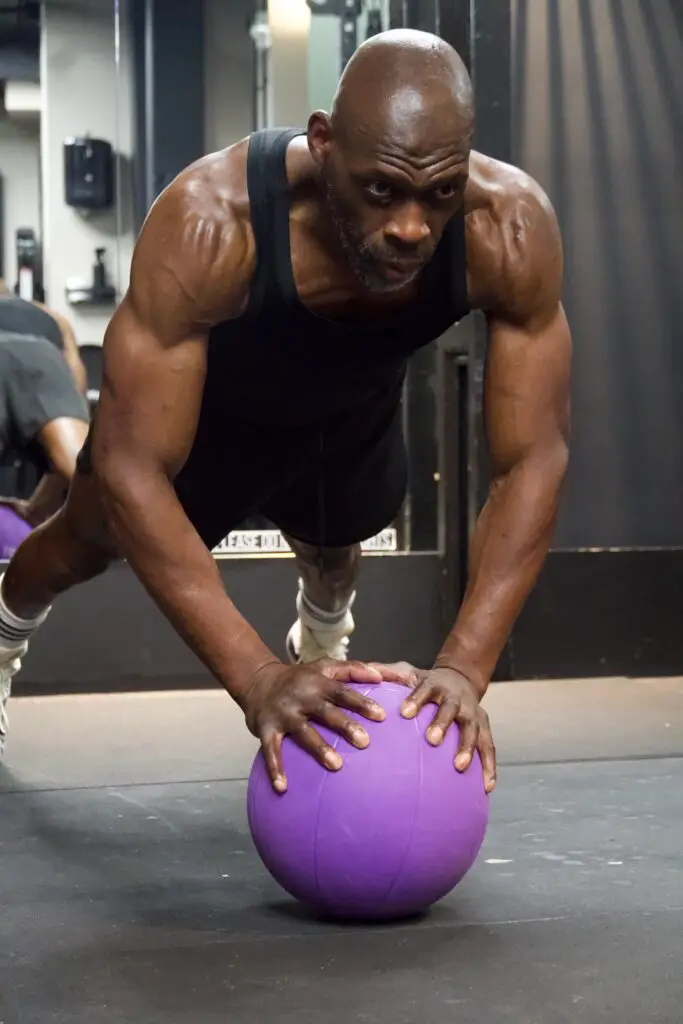Written by Will Duru, BSc (Hons) Sport and Exercise Science, Level 3 Personal Trainer
Strength training for beginners can feel intimidating, but with the right approach and tools, it becomes accessible, safe, and gratifying. Lifting weights (or using your body weight as resistance) builds lean muscle, strengthens your bones and joints, and even boosts your metabolism, allowing you to burn more calories at rest.
It’s never too late to start reaping these benefits, whether you plan to train at the gym or at home. In this guide, we’ll cover all the fundamentals: proper form for basic exercises (like squats, deadlifts, and presses), understanding sets and reps, the principle of progressive overload, injury prevention tips, and how an intuitive strength training app like 12Reps can simplify your fitness journey.
By the end, you’ll have a solid framework for a beginner workout plan and the confidence to start building strength safely and effectively.
Starting a strength training routine can transform your health and fitness. Beyond the visible muscle tone it develops, strength training improves bone density and joint stability, helping to protect against injuries and osteoporosis as you age. It also reduces the risk of chronic conditions, such as heart disease and type 2 diabetes, and can enhance your mental well-being. In practical terms, building strength makes everyday tasks easier, from carrying groceries to climbing stairs, and boosts your overall functional fitness.
For beginners, the key is to start with the basics and focus on good form and consistency. Remember, you don’t need to be a bodybuilder or lift heavy weights right away to benefit. Even bodyweight exercises or light dumbbells can be effective in building strength when performed correctly. What’s important is a structured plan and gradual progress.
That’s where a tool like the 12Reps app comes in – it acts as a personal guide in your pocket, providing structure and personalised workouts so you always know what to do next. Strength training is truly for everyone, and with the right guidance, you can safely embark on your journey to a stronger, healthier you.
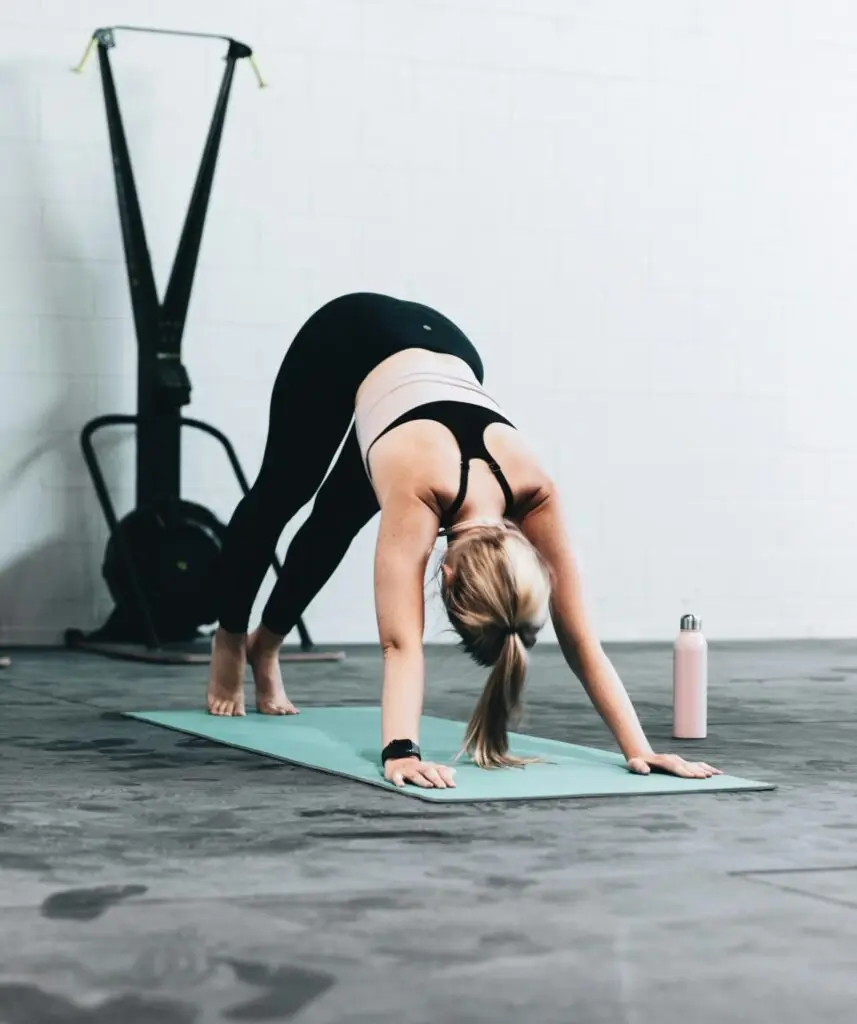
One of the first steps for any beginner is learning proper form on the fundamental exercises. These big compound movements recruit multiple muscle groups and deliver the most benefit for your effort. The core lifts to focus on include the squat, deadlift, and press (along with variations such as the bench press or overhead press). Mastering these will build a solid foundation for full-body strength.
Figure: A beginner practising the barbell back squat with proper form – feet shoulder-width apart, back neutral, and thighs parallel to the floor. Starting with an empty bar or light weight helps you nail down technique before adding more weight.
- Squat: The squat is a powerhouse exercise for your legs and glutes. Stand with feet about shoulder-width apart and bend your knees and hips to lower down as if sitting in a chair, keeping your chest up and back straight. Aim to get your thighs about parallel to the floor, then drive through your heels to stand back up.
- Ensure your knees track in line with your toes (not caving inward) and maintain a balanced weight distribution on your mid-foot and heels. Squats can be performed with just body weight or while holding a weight (e.g., a dumbbell close to your chest, known as a goblet squat). Focus on form before load – if you cannot maintain a neutral spine or your heels lift off the ground, use a lighter weight or practice box squats first.
- Deadlift: The deadlift strengthens your entire posterior chain (including the back, glutes, and hamstrings) and core. To perform a basic deadlift, stand with your feet hip-width apart, hinge at your hips, and bend your knees to grasp the weight (a barbell or dumbbell) on the floor, keeping your back flat and your chest up. Lift by driving through your legs – extend your hips and knees to stand up while keeping the weight close to your body. Avoid rounding your lower back; a straight, braced spine is crucial to prevent injury.
- At the top, squeeze your glutes, then hinge and lower the weight back down under control. Start with light weights or even a sturdy empty bar until you feel the correct muscles working. Proper deadlift form engages the legs and hips to lift, not just your lower back.
- Press (Overhead or Bench): Pressing movements build your upper-body strength. A classic overhead press involves pressing a weight from shoulder level straight up overhead. Keep your core tight and avoid overarching your back. A bench press (with a barbell or dumbbells) has you lying on a bench and pressing the weight up from chest level. In both cases, control the weight through the full range of motion and avoid locking out your elbows at the top
- For overhead presses, start with light dumbbells to focus on proper form. Keep your elbows slightly in front of you and drive the weight up in a straight line above your head. For the bench press, ensure your shoulder blades are pulled back and down, feet planted on the floor, and lower the weight to around mid-chest before pressing up. If you’re new to these lifts, working with a spotter or using machines (like a shoulder press machine) can provide extra safety as you learn the movement pattern.

Pro tip: It’s normal for these movements to feel awkward at first. Take your time to learn the technique. If possible, have a trainer or experienced lifter check your form, or use resources like instructional videos.
Maintaining proper form is crucial – it not only makes the exercises more effective but also greatly reduces your risk of injury. In the 12Reps app, each exercise in your plan comes with step-by-step instructions (and often video demonstrations), so you can confidently mimic proper technique even without a personal trainer by your side.
Figure: A personal trainer guides a beginner on proper squat form, ensuring she maintains a neutral spine and correct bar placement. Good technique builds strength faster and prevents injuries – the 12Reps app provides expert guidance to help you get it right from the start.

Sets, Reps and Rest: Understanding the Basics
When you see a workout plan, it typically prescribes a specific number of sets and repetitions for each exercise. Understanding these terms is fundamental:
- Repetition (Rep): One complete execution of an exercise. For example, one rep of a squat is one full squat down and up.
- Set: A group of consecutive repetitions performed without resting. If a program specifies 3 sets of 10 reps, that means you’ll do 10 repetitions, rest, and repeat for a total of 3 rounds.
- Beginners often wonder how many reps and sets to do. A simple guideline is to start with a moderate rep range and a low number of sets as you learn movements. For instance, aim for about 10–15 reps per set for each exercise, and start with 1–2 sets. Using lighter weights that you can lift with proper form for ~10–15 repetitions is ideal for beginners, as it helps build a baseline strength and endurance.
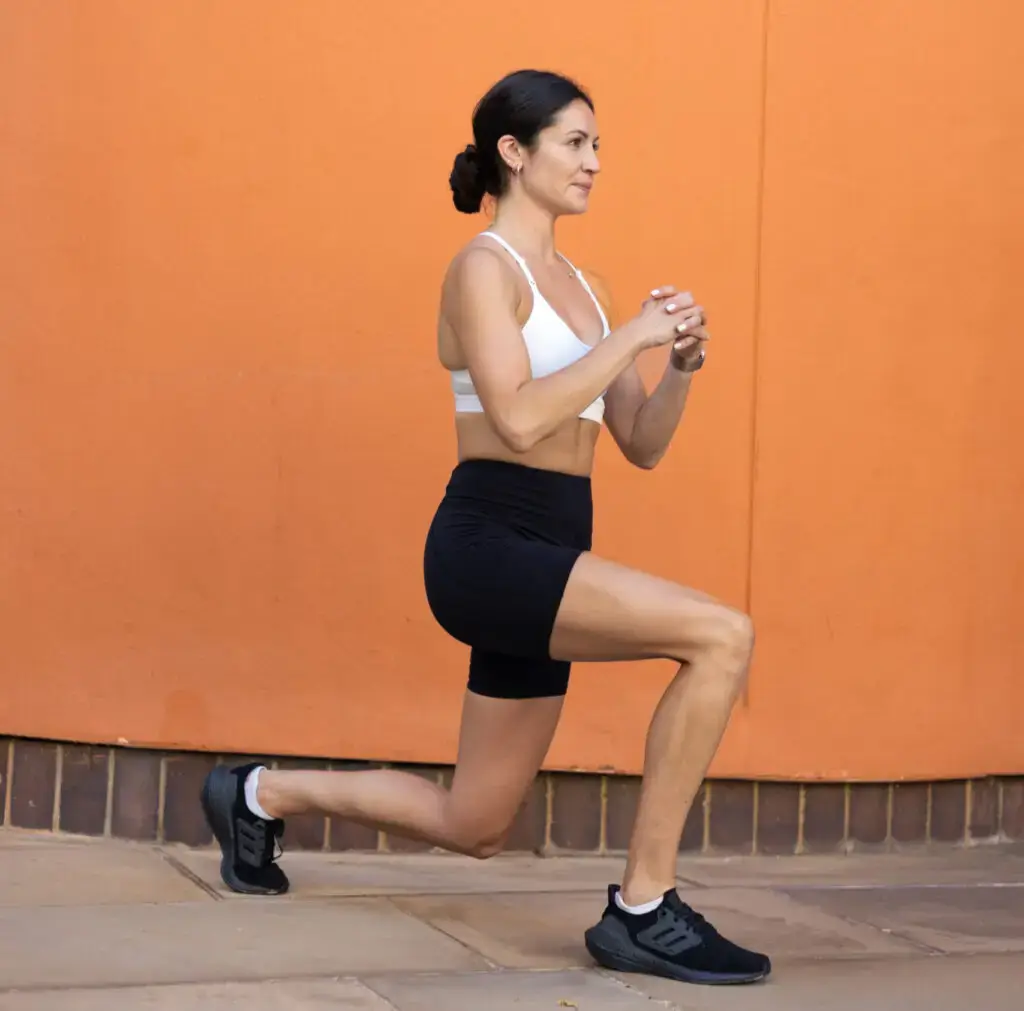
As those initial sets and reps become easier, you can add a third set or increase the weight (see Progressive Overload below). In fact, research shows that for novices, a single well-executed set of ~12 repetitions can effectively build strength when done to fatigue. This means you don’t need to spend hours doing endless sets – focus on quality over quantity initially.
Rest is another critical factor: Both short rest periods between sets and more extended rest periods between workout days. For strength training, resting for about 60–90 seconds between sets is common for moderate rep ranges. This allows your muscles to recover just enough to perform the next set with good form.
After finishing a workout, allow your muscle groups at least 48 hours to recover before working them again. In practice, that means if you do a full-body workout on Monday, wait until Wednesday or Thursday for the next one. Rest days are when your muscles repair and grow stronger, making them essential for progress and injury prevention. Beginners should avoid training the same muscle group on consecutive days.
Lastly, listen to your body during and after workouts. Muscle “burn” or fatigue is normal, but sharp pain is not – if something hurts in a bad way, stop that exercise and double-check your form or consult a professional. And don’t forget to breathe! Exhale during the hard part of the lift (e.g. pushing up) and inhale during the easier part (lowering down) . A good breathing technique will help you lift more efficiently and avoid dizziness from holding your breath.
One of the most important principles in strength training is the concept of progressive overload. This simply means gradually increasing the challenge on your muscles over time. Your body adapts to exercise, so to continue getting stronger or fitter, you need to progressively make your workouts a bit more challenging – whether by adding weight, doing more reps, or reducing rest time, etc.
Progressive overload for beginners might sound technical, but in practice, it could be as simple as: if you’ve been comfortably doing 2 sets of 10 reps of an exercise, try for 12 reps next time, or add a small amount of weight. The increases do not need to be large – in fact, a good rule of thumb is to increase the intensity by no more than about 5–10% at a time. For example, if you’ve been squatting 50 kg, moving up to 52.5 kg is a safe increment. This gradual approach challenges your muscles just enough to stimulate growth without overstressing your body. It helps maximise strength gains while minimising injury risk.

Here are some ways you can apply progressive overload:
- Increase Weight: The most straightforward method. If you started with dumbbell presses at 5 kg and it feels easy for your target reps, move up to 6 kg in the next session. Even small increases count.
- Increase Repetitions: If you’re not ready to add weight, do more reps with the same weight. For instance, go from 2 sets of 10 reps to 2 sets of 12 reps.
- Increase Sets or Frequency: Add an extra set (e.g. 3 sets instead of 2) once you can perform all reps with good form. Or add one more training day per week (ensuring you still have rest days).
- Reduce Rest or Add Tempo: Shortening rest periods or performing reps more slowly can make exercises harder without the need to add weight. For example, doing a squat with a 3-second lowering phase increases time under tension.
The 12Reps app is particularly helpful here because it tracks all your workouts and shows your progress. Each time you log your sets and reps, you have a record of what you lifted. The app can then suggest when to bump up weight or reps based on your performance.
By following the app’s personalised plan, you’re essentially following a built-in progressive overload program – it will nudge you to push a little more when you’re ready, ensuring you continue to make progress. Plus, 12Reps guides you to increase intensity gradually and safely (it’s designed to adapt to your fitness level), so you won’t be increasing weight too quickly. This helps you avoid the common newbie mistake of doing too much too soon, which can lead to burnout or injury. Remember, consistency and patience are key – those steady, small improvements really add up over time.

Safety First: Tips for Injury Prevention
When you’re new to strength training, safety should be a top priority. Proper technique and smart habits will keep you injury-free and ensure your strength journey is sustainable. Follow these key safety tips as you begin:
- Warm Up Thoroughly: Never jump straight into heavy lifting. Start each session with 5–10 minutes of light cardio (such as brisk walking, cycling, or jumping jacks) to get blood flowing to your muscles. Then, do a few dynamic stretches or bodyweight exercises (such as arm circles or bodyweight squats) to prime the specific muscles you’ll be working. Warm muscles are more pliable and generate force better; cold muscles are more prone to strains.
- Focus on Form Overweight: Ego lifting (lifting too heavy with bad form) is a recipe for injury. Initially, select a weight that you can lift with perfect form for at least 10–15 repetitions. If you feel your form breaking down (like your back rounding on a deadlift or your knees caving in on a squat), stop the set or reduce the weight.
- It’s far better to do fewer reps correctly than to push through with poor technique. Consider working with a trainer initially or use the 12Reps app’s exercise demos to learn proper form. A good technique will maximise your results and protect you from sprains or strains.
- Use Safe and Controlled Movements: Perform each repetition in a controlled manner, avoiding jerky or bouncing movements with the weights. Maintain control, especially during the lowering phase of each lift. Avoid using momentum to cheat the weight up – this often happens if the weight is too heavy. A good rule: if you can’t lift it slowly with proper form, you shouldn’t lift it. By moving deliberately, you keep tension on the muscles and reduce stress on your joints.
- Don’t Hold Your Breath: Remember to breathe continuously. Exhale during the exertion phase (when lifting or pushing) and inhale during the easier phase (lowering the weight). Holding your breath can spike your blood pressure and cause dizziness. If you find yourself forgetting to breathe, try counting your reps out loud – it forces you to exhale regularly.
- Train All Major Muscle Groups: Avoid focusing solely on your “mirror muscles” (such as chest and biceps) while neglecting others. Imbalances can put you at risk of injury. Be sure to strengthen opposing muscle groups in a balanced way – e.g., train both the chest and back, as well as the quads and hamstrings, biceps and triceps, etc. Well-rounded strength not only looks better but also protects your joints. For example, strong glutes and hamstrings will safeguard your knees when you squat, and a strong back will protect your shoulders when you bench press.
- Schedule Rest and Recovery: Give your body time to recover. Muscles actually become stronger during rest periods between workouts, when they repair the microscopic tears caused by training. Aim for at least 1–2 rest days per week and avoid working the same muscle group two days in a row. If you did a full-body routine on Monday, wait until Wednesday (at minimum) for the next one. On rest days, you can engage in light cardio or stretching but avoid intense lifting. Also, make sure you’re sleeping adequately and eating a nutritious diet to support recovery – these factors hugely influence how well you progress and avoid injuries.
- Listen to Your Body: Some muscle soreness a day or two after lifting is normal (especially at the beginning – this is called DOMS). However, sharp or sudden pain during an exercise is a warning sign. Don’t ignore pain. If a particular movement hurts, stop and double-check your form. If the pain persists, skip that exercise and if needed, consult a professional to avoid aggravating a potential injury. It’s better to miss one workout than to be out for weeks because you pushed through pain.
Figure: Coaches reviewing a workout plan on a smartphone, illustrating how a fitness app can guide your training. With 12Reps, you get expert-designed workout plans and step-by-step instructions in your pocket – it’s like having a personal trainer with you to ensure you’re exercising safely and effectively.
By following these precautions, you’ll greatly reduce the risk of injury and set yourself up for long-term success. Strength training is very safe when done correctly. In fact, as you build stronger muscles, you’ll also be protecting your joints and improving balance, which helps prevent injuries in daily life too. So take it slow, be mindful, and you’ll stay injury-free while getting stronger.
Building a Beginner Workout Plan
Now that you understand the basics, let’s discuss how to put them into an actual beginner workout plan. A well-designed beginner routine will ensure that you work all major muscle groups, allow for sufficient recovery, and steadily challenge you. Here are some guidelines for structuring your plan:
- Frequency – start with 2 to 3 days per week: As a beginner, you’ll make great progress with relatively few sessions, because your body is new to these stimuli. The general recommendation is to engage in at least two days a week of full-body strength training for health benefits. Many beginners start with Monday, Wednesday, and Friday (3 days) or Tuesday and Thursday (2 days). If doing two days, you might do full-body workouts each time. With three days, you can also do full-body each session (since you have a rest day between each) or do an upper-lower split (e.g. upper body Monday, lower body Wednesday, full-body or core focus Friday). The 12Reps app can help you schedule your workouts optimally based on your availability – it ensures you’re hitting everything without overtraining.
- Exercises – focus on compound movements: Each workout should include the fundamental exercises or their variations. For a full-body session, a simple template is:
- Lower body exercise: e.g. Squats or lunges on one day, deadlifts or hip thrusts on another.
- Push exercise: e.g. Bench press or push-ups (horizontal push), and/or overhead press (vertical push).
- Pull exercise: e.g. Row (like dumbbell rows or seated cable rows) for horizontal pull, and/or lat pull-down or assisted pull-up for vertical pull.
- Core exercise: e.g., planks or bird dogs to strengthen your abs and lower back.
By mixing a squat/deadlift, a push, and a pull each session, you’ll work most major muscles . For example, a classic 3-day full-body beginner routine might look like:
- Day 1: Squat, Bench Press, Row, Plank
- Day 2: Deadlift, Overhead Press, Lat Pull-Down, Side Plank
- Day 3: Leg Press or Lunge, Push-Ups, Dumbbell Row, Bicycle Crunches
This is just a sample – there are many ways to structure it. The key is balance and simplicity. Start with 4–5 exercises per session: too many exercises can cause fatigue and longer workouts, which isn’t ideal for beginners. Each workout might last around 45 minutes including warm-up and cool-down.
- Sets & Reps – Moderate Volume: As discussed earlier, begin with approximately 1–2 sets of 8–12 reps for each exercise. You can gradually increase to 3 sets as you get more comfortable. Within those reps, the weight should be challenging but allow you to complete all reps with good form. For example, if you’re aiming for 10 reps, the 9th and 10th rep should feel tough but doable without losing form. If you can’t reach the target reps, the weight is too heavy (or you need more rest); if you finish the reps easily and could do more, that’s a sign you can increase the weight next time.
- Rest and progression: Ensure at least one rest day between strength workouts. It can be beneficial to alternate workout days with cardio or flexibility exercises or simply take a complete rest. Evaluate your progress every week or two. If an exercise feels easier, apply progressive overload by adding a bit of weight or a couple of reps, as described earlier. Keeping a workout log (which the 12Reps app automatically tracks when you log your sessions) will help you keep track of this. Also, every 4–6 weeks, you might change up some exercises or add new ones to keep things interesting and well-rounded (this could be as simple as swapping barbell squats for dumbbell goblet squats, or regular deadlifts for Romanian deadlifts, etc.).
One huge advantage of using an app like 12Reps is that much of this planning is done for you. 12Reps creates a personalised workout plan tailored to your goals, fitness level, and available equipment. When you first set up the app, you can input whether you have access to a gym or are working out at home, how many days per week you want to train, and what your primary goal is (e.g. build muscle, general fitness, etc.).
The app’s AI will then generate a balanced beginner-friendly program, so you don’t have to worry about the exercise selection or scheduling – it’s all laid out. It’s like having a knowledgeable coach write your program, but with the added flexibility to make adjustments as needed.
Additionally, 12Reps offers free workout guides for beginners – for example, they provide a free PDF guide developed in collaboration with award-winning personal trainers to help new users train with confidence. This can be a great companion resource if you want a pre-made plan to follow along with as you get started.
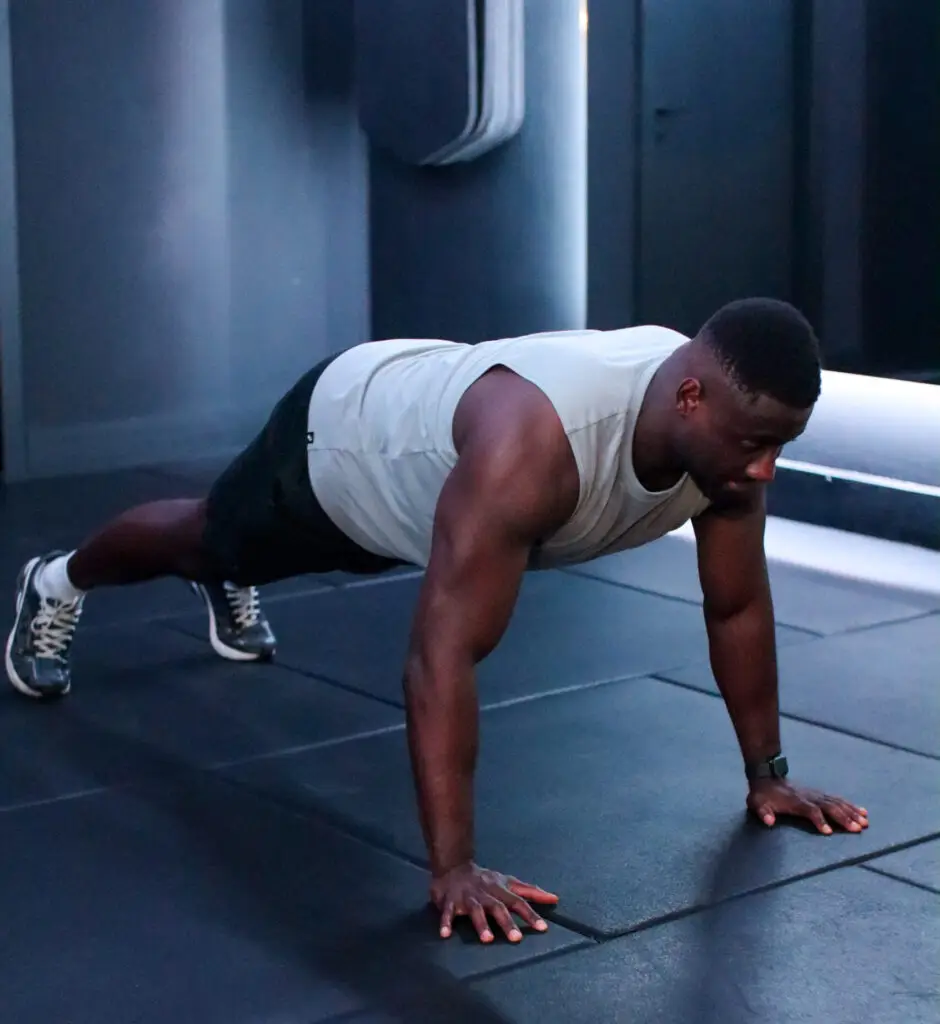
We’ve mentioned the 12Reps app throughout this guide – now let’s highlight exactly how it can help you as a beginner. Starting a new fitness routine can be overwhelming, but 12Reps is designed to make strength training accessible, intuitive, and safe for everyone. Here are some of the features and benefits of using 12Reps as a beginner:
- Personalised Workout Plans: The app functions as a virtual personal trainer, creating custom workouts tailored to your individual goals, fitness level, and available equipment. No more guesswork or generic programs – your plan will be tailored, whether you’re working out at home with just bodyweight or at a fully equipped gym. For example, if you indicate that you only have dumbbells, it will provide you with practical exercises that utilise dumbbells. This personalisation means you’re starting at the right level for you, which is crucial for safety and confidence.
- Intuitive Interface and Logging: 12Reps features an easy-to-use interface that allows you to quickly log your sets, reps, and the weight used for each exercise. The app provides intuitive tools to record every rep and set, making it easy to track your progress. As a beginner, tracking can be motivating – you’ll visibly see yourself lifting more over time. The app tracks your progress, allowing you to see, for instance, your squat weight increase or your reps improve week by week. This visual feedback helps you stay committed to the program and celebrate milestones.
- Technique Guidance and Video Tutorials: For beginners, doing exercises correctly is a top priority, and 12Reps has you covered. Each exercise in your routine comes with clear instructions and often an accompanying video or diagram so you can see proper form. It’s like having a reference library of exercises at your fingertips. The guidance is step-by-step and easy to follow – perfect for those learning the movements. This focus on form helps you build good habits from day one. Some apps even use AI or motion tracking to give feedback on your form (check if 12Reps has this feature). But even with just videos, you can compare your own form to the example to ensure you’re doing it right. And remember, proper form means better results and fewer injuries!
- Gradual Progression and Adaptive Training: As discussed in the progressive overload section, gradually increasing the difficulty is a key way to build strength. 12Reps makes this process seamless. The app will adjust your workouts as you improve, nudging you to increase weights or reps when it detects you’re ready. It literally guides you step by step and gradually increases the intensity as you improve, which is the essence of safe progression. If a certain weight was too heavy and you mark an exercise as very difficult, the app can suggest repeating that weight next time or adjusting the reps. Conversely, if you log that a session was easy, it might suggest a bit more challenge next time. This smart adaptation means you’re always training in the optimal zone – not too easy (which can stall progress) and not too hard (which can cause injury or discouragement).
- Built-in Rest and Recovery Cues: The app can manage your workout schedule and remind you to rest when needed. Many beginners are unsure how to structure rest days – 12Reps will space out muscle groups appropriately. For example, if you did a heavy leg workout, the app won’t schedule another intense leg session the very next day. This helps prevent overtraining. It may also include short cool-down or stretching recommendations at the end of workouts to help with recovery.
- Motivation and Education: Beyond just workouts, 12Reps serves as a fitness coach and community. The app provides expert tips, motivational quotes, and educational content to keep you inspired (their blog and newsletter are full of useful articles, from nutrition tips to exercise science) . There’s also a community aspect – you might be able to share your progress or see others’ success stories, which is motivating. Starting out, staying motivated is often the hardest part, so having an app that tracks your streaks, celebrates your achievements, and keeps the experience fun can make a big difference. Some users liken it to a game where you’re trying to beat your previous scores – suddenly doing that extra rep becomes rewarding!
- Safety and Confidence: Perhaps most importantly, using 12Reps can give a beginner peace of mind that they’re doing things correctly. It’s normal to feel unsure in the gym – “Am I doing this right? Am I lifting enough? What do I do next?” The app removes those uncertainties. It’s like having a knowledgeable friend guide you: “Okay, today you’ll do these exercises, for these many reps. Here’s how you do them. Ready? Go!” And if you forget an exercise mid-workout, you can quickly check the app for instructions. This level of guidance ensures that you maintain good form and make steady progress in a safe manner, which is exactly what we want for beginners. Over time, your confidence will grow. You’ll learn how to lift properly and how to structure workouts so well that you could do it on your own – but you might keep using the app for convenience and continual expert guidance.
To sum it up, 12Reps essentially compresses the learning curve for newcomers to strength training. Instead of spending months figuring out a routine, learning form from scattered YouTube videos, or risking doing it incorrectly, you get a one-stop solution. It’s the strength training app that guides you through the entire process, from planning workouts to logging progress and adjusting as you get fitter. This lets you focus on what matters – showing up consistently and putting in the work – while trusting the app to handle the programming and know-how.
Conclusion: Start Your Strength Journey Today
Embarking on strength training as a beginner is one of the best decisions you can make for your health and fitness. By understanding the fundamental exercises, practising proper form, and following principles like progressive overload, you’ll set a strong foundation for continuous improvement. Remember to prioritise safety: warm up, use correct technique, and allow your body the rest it needs to grow stronger. With each workout, you’ll notice progress – maybe you can do one more push-up than before, or the weights feel a bit lighter. Celebrate those small wins!
Most importantly, stay consistent and enjoy the process. Strength training is not an overnight transformation, but the changes in your body and confidence over a few months will amaze you. And you don’t have to do it alone or figure everything out on your own. Tools like the 12Reps app are there to guide you every step of the way, providing personalised workouts, expert instruction, and a built-in roadmap for progression. It’s like having a personal trainer and planner in your pocket, ensuring that your journey is tailored, safe, and effective.
So, are you ready to get started? Armed with this comprehensive beginner’s guide and the support of a smart strength training app, you have everything you need to begin your strength training journey with confidence. Lace up your training shoes, download 12Reps, and take that first step. In a few weeks, you’ll be amazed at how far you’ve come – stronger, healthier, and empowered. Remember, every expert was once a beginner. Stay consistent, trust the process, and enjoy getting stronger, one rep at a time. Good luck on your strength training adventure!
References:
- Roland, J. (2024). A Beginner’s Guide to Weight Training. Healthline .
- Mayo Clinic Staff. (2022). Weight training: Do’s and don’ts of proper technique. MayoClinic .
- Sherrell, Z. (2022). What is a progressive overload workout plan? Medical News Today .
- 12Reps – Frequently Asked Questions. just12reps.com .
- 12Reps – Home Page. just12reps.com .
- Healthdirect Australia. (2021). Strength training for beginners. healthdirect.gov.au .
- How to Start Lifting Weights: Tips for Beginners. familydoctor.org . (Provides beginner-friendly weight training tips from the American Academy of Family Physicians).



